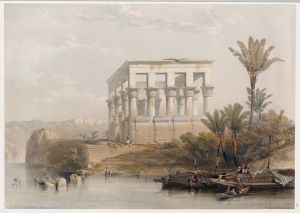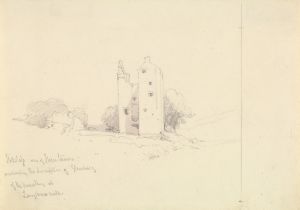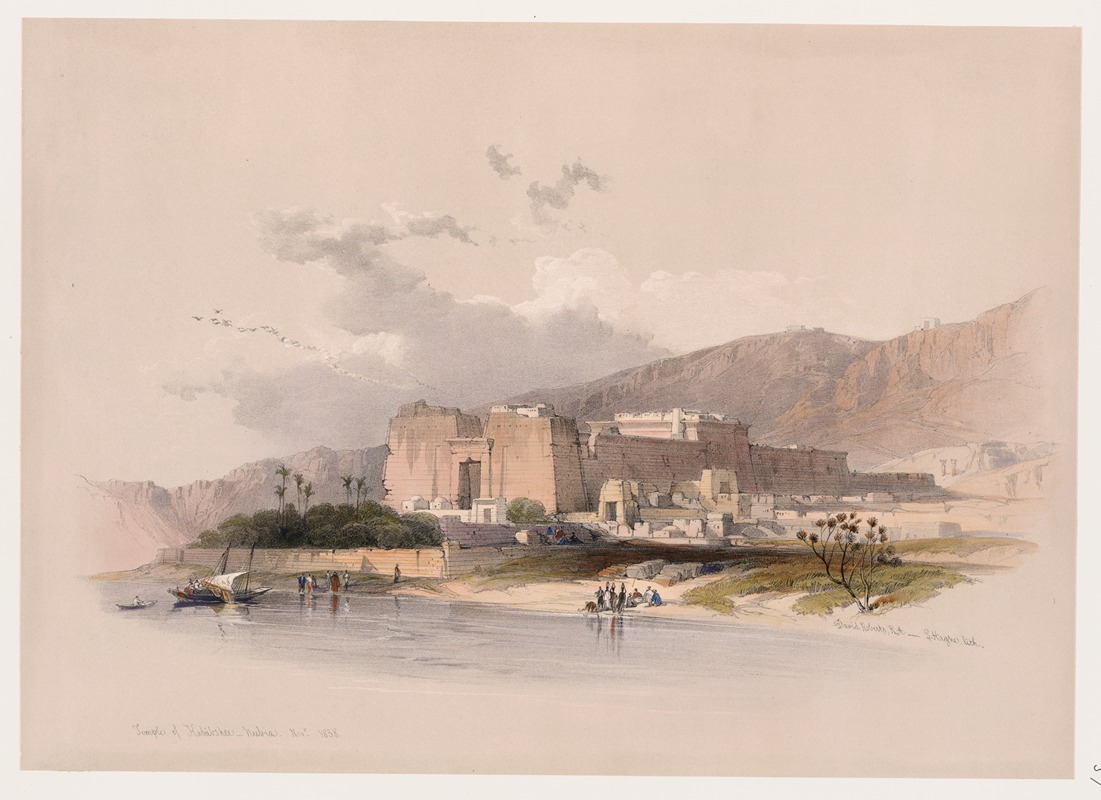
Temple of Kalabshee [Kalabsha, Kalâbishah], Nubia. Nov. 1838.
A hand-painted replica of David Roberts’s masterpiece Temple of Kalabshee [Kalabsha, Kalâbishah], Nubia. Nov. 1838., meticulously crafted by professional artists to capture the true essence of the original. Each piece is created with museum-quality canvas and rare mineral pigments, carefully painted by experienced artists with delicate brushstrokes and rich, layered colors to perfectly recreate the texture of the original artwork. Unlike machine-printed reproductions, this hand-painted version brings the painting to life, infused with the artist’s emotions and skill in every stroke. Whether for personal collection or home decoration, it instantly elevates the artistic atmosphere of any space.
"Temple of Kalabshee [Kalabsha, Kalâbishah], Nubia. Nov. 1838." is a painting by the Scottish artist David Roberts. Roberts, born on October 24, 1796, in Stockbridge near Edinburgh, was a prominent painter known for his detailed and accurate depictions of architectural and historical sites. His works are particularly significant for their documentation of 19th-century Middle Eastern and North African landscapes and monuments.
The painting depicts the Temple of Kalabsha, an ancient Egyptian temple originally located at Bab al-Kalabsha, approximately 50 kilometers south of Aswan in Nubia. The temple, dedicated to the Nubian sun god Mandulis, was constructed during the early Roman period, around 30 BCE, under the reign of the Roman Emperor Augustus. It is one of the largest free-standing temples in Nubia and is noted for its impressive architecture and detailed reliefs.
David Roberts visited Egypt and Nubia as part of his extensive travels in the Middle East from 1838 to 1839. During this journey, he created numerous sketches and studies that would later serve as the basis for his lithographs and paintings. His visit to the Temple of Kalabsha took place in November 1838, and the resulting artwork captures the grandeur and intricate details of the temple's structure.
The painting showcases the temple's massive pylons, courtyards, and hypostyle halls, emphasizing the scale and craftsmanship of the ancient builders. Roberts' meticulous attention to detail and use of light and shadow bring out the texture of the stone and the depth of the carvings. His work provides a valuable visual record of the temple before its relocation in the 1960s due to the construction of the Aswan High Dam.
In the 1960s, the Temple of Kalabsha was dismantled and relocated to a site near the Aswan High Dam to protect it from the rising waters of Lake Nasser, a result of the dam's construction. This massive UNESCO-led project aimed to preserve numerous ancient monuments that would have otherwise been submerged. The temple was carefully reassembled at its new location, where it remains a significant historical and tourist site.
David Roberts' paintings, including "Temple of Kalabshee [Kalabsha, Kalâbishah], Nubia. Nov. 1838.," are highly regarded for their historical accuracy and artistic quality. His works were published in a series of lithographs titled "The Holy Land, Syria, Idumea, Arabia, Egypt, and Nubia," which were produced by lithographer Louis Haghe and published between 1842 and 1849. These publications played a crucial role in bringing the wonders of the Middle East and North Africa to the attention of the European public and remain important resources for historians and art enthusiasts.
Roberts' contributions to the documentation of ancient sites have left a lasting legacy, providing insights into the architectural and cultural heritage of regions that have undergone significant changes over the centuries. His painting of the Temple of Kalabsha stands as a testament to his skill as an artist and his dedication to capturing the essence of historical landmarks.





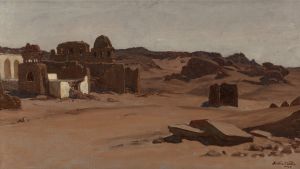
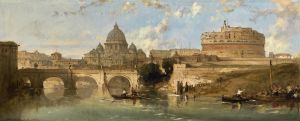
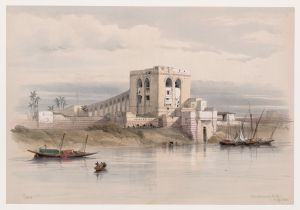
![Excavated temples of Aboosimble [Abû Sunbul], Nubia.](/imgs/217481/s/david-roberts-excavated-temples-of-aboosimble-abu-sunbul-nubia-2ca5e7e8.jpg)

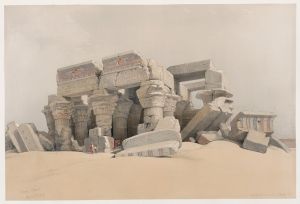
![Lateral view of the temple called the Typhonæum, at Dendera [Dandara].](/imgs/217507/s/david-roberts-lateral-view-of-the-temple-called-the-typhonaeum-at-dendera-dandara-b378b9d7.jpg)
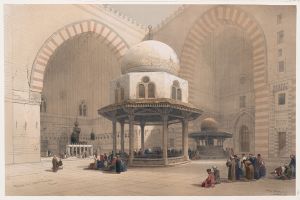
![Ruins. Temple on the Island of Biggeh [Bîga, Bîjah], Nubia.](/imgs/217537/s/david-roberts-ruins-temple-on-the-island-of-biggeh-biga-bijah-nubia-1cd1f41d.jpg)
![Temple of Dandour [Dendûr], Nubia.](/imgs/217545/s/david-roberts-temple-of-dandour-dendur-nubia-8921547f.jpg)
